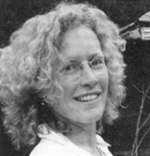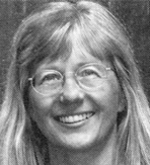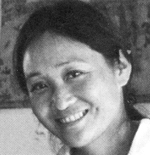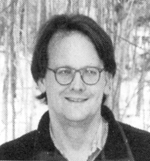
A veteran environmental journalist, Lisa Jones knew about Michael Soulé the “father of conservation biology” long before she knew about Michael Soulé the Buddhist (“The Buckshot Bodhisattva“). But now Jones and Soulé are both members of the same sangha in tiny Paonia, Colorado, where Jones buys the meat she eats from local ranchers, and Soulé retreats into the hills to hunt game for himself—and in his view, to restore ecological balance. “There’s nothing pious or politically correct about Michael,” Jones says; “he applies the same kind of boundary-busting thinking to his spiritual practice that he applies to science and environmental activism.”
 Longtime Buddhist practitioner Carla Brennan interviews former outlaw biker James Veliskakis about his spiritual transformation in “From Biker to Buddhist.” “This piece was inspired,” Brennan explains, “by my interest in the parallel paths of the Buddhist practitioner and the mythical American outlaw. Both seek freedom and fearlessness.” Carla Brennan teaches art, meditation, and wilderness retreats and can usually be found in the Santa Cruz Mountains of California.
Longtime Buddhist practitioner Carla Brennan interviews former outlaw biker James Veliskakis about his spiritual transformation in “From Biker to Buddhist.” “This piece was inspired,” Brennan explains, “by my interest in the parallel paths of the Buddhist practitioner and the mythical American outlaw. Both seek freedom and fearlessness.” Carla Brennan teaches art, meditation, and wilderness retreats and can usually be found in the Santa Cruz Mountains of California.

Sheila Rock‘s portfolio of the monks at SeraJeh monastery, taken from her forthcoming book, Sera: The Way of the Tibetan Monk appears here. She remarks in the book’s preface, ”I’ve always felt that we are on a journey of self-discovery—following my heart has been something I’ve tried to do all my life. It has led me to many wonderful places and interesting people around the world. At Sera, I was moved by the monks’ openheartedness and felt compelled to capture the light in their faces.” 
Clark Strand (“Born in the USA: Racial Diversity in Soka Gakkai International“) says of his reasons for writing about SGI: “Soka Gakkai International is the largest, most socially active and racially diverse Buddhist organization in America. Nevertheless, it remains largely unknown to the predominantly white Buddhist culture of Zen, Vipassana, and Vajrayana. Why? What is it about SGI culture that has attracted so many different types of people? For that matter, what is it about those other cultures that had attracted so few? The answers were surprising. They forced me to completely reconsider the place of Buddhism in American culture.”